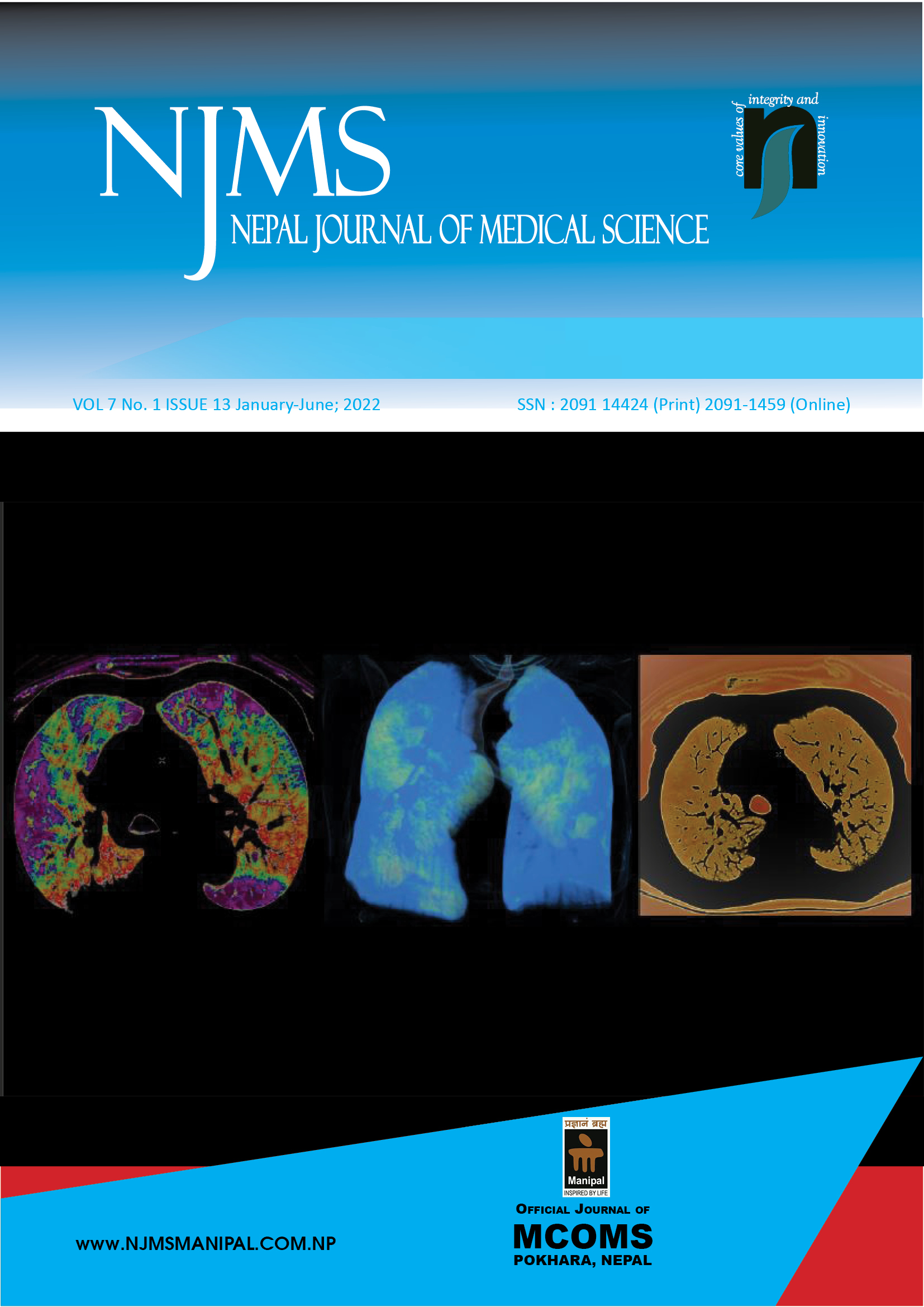Functional and Radiological Outcome in the Management of Diaphyseal Humeral Shaft Fracture Using the Minimally Invasive Percutaneous Plate Osteosynthesis (MIPO) Technique
DOI:
https://doi.org/10.3126/njms.v7i1.44570Keywords:
Bone Plate, Fracture Healing, Humerus, Radial NerveAbstract
Introduction: Minimally invasive percutaneous plate osteosynthesis (MIPO) is gaining preference nowadays compared to other treatment modalities for diaphyseal fracture of the humerus. We have evaluated the functional and radiological outcome of diaphyseal humeral shaft fracture with the MIPO technique.
Methods: A hospital-based prospective study was conducted on 23 adult patients with diaphyseal fracture of the humerus and treated with the Minimally Invasive Percutaneous Plate Osteosynthesis (MIPO) technique. In all cases, 4.5mm locking compression plates were applied. Clinical and radiological evaluation was done at 6 weeks, 3 months, and 6 months.
Results: Out of 23 patients, the mean age of patients was 40.3 years. The maximum number of cases were caused due to road traffic accidents 14 (60.9%). The left side was commonly affected with a maximum number of them being Type A fracture 13 (56%) as per AO/OTA classification. The mean operative time was 106 minutes and fracture union was achieved in all patients by the end of 20 weeks (mean 14.83 weeks). In the study group, 1 patient had superficial infection with no evidence of iatrogenic radial nerve injury or implant failure. Shoulder and elbow ROM was restored to normal range.
Conclusion: MIPO is a safe and effective technique for the management of diaphyseal humerus fractures, with early fracture healing, less risk of complications such as superficial or deep infection, implant failure, and iatrogenic radial nerve injury, along with a cosmetically acceptable scar.
Downloads
Downloads
Published
How to Cite
Issue
Section
License
Copyright (c) 2022 Nepal Journal of Medical Sciences

This work is licensed under a Creative Commons Attribution 4.0 International License.
Copyright © by Nepal Journal of Medical Sciences. The ideas and opinions expressed by authors of articles summarized, quoted, or published in full text in this Journal represents only opinions of authors and do not necessarily reflect the official policy of Nepal Journal of Medical Sciences or the institute with which the author(s) is (are) affiliated, unless so specified.




